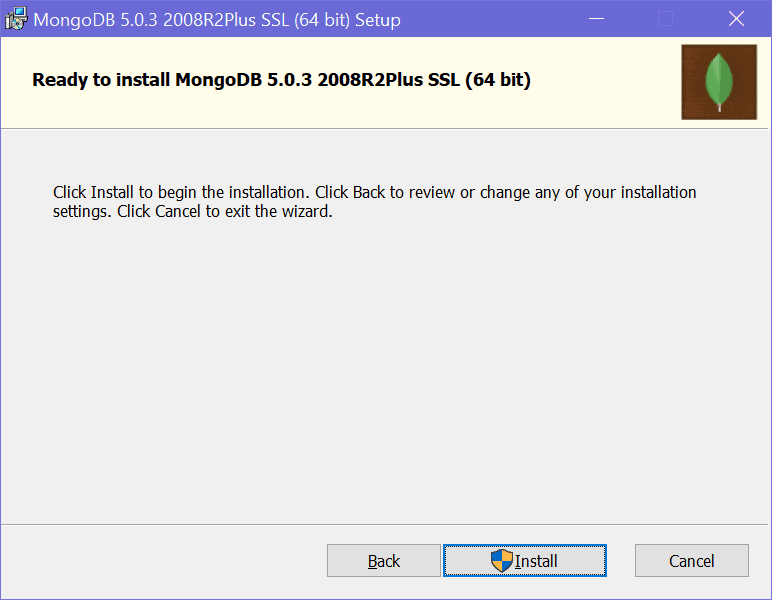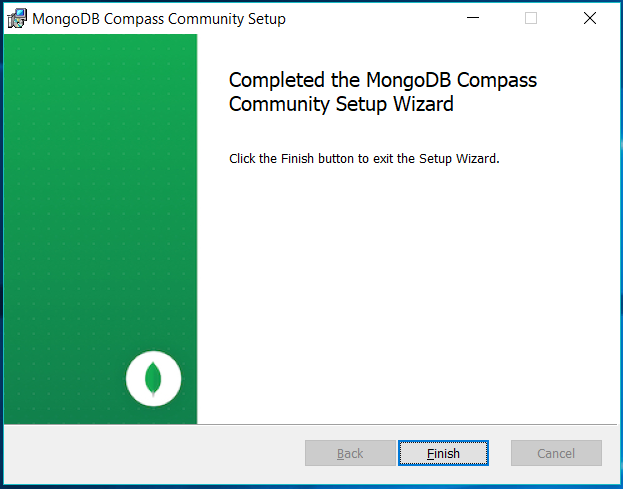

It stores data in flexible, JSON-like, meaning fields can vary from document to document and over the time the data structure can change. MongoDB is a non-relational database that stores data in collections. () Is a **free and open-source cross-platform document-oriented database program** and is developed by MongoDB Inc. **High-level query language**: Databases have a language in which we can ask them questions to get the data in whichever way we may need it. **Data abstractions**: We can store data using complex data types that make it easy for us to save data without worrying about the underlying details of the implementation. **Concurrency**: We can have many clients connected to our database (program) simultaneously **Scalability**: As our demands to get more and more data increases, databases also make it easy to increase our infrastructure capacity **Efficiency**: We could just use files to store the data, but this solution will be slow for any serious program.

**Reliability**: Data can always be accessed In addition to persistence, database systems provide a number of other properties that make them exceptionally useful and convenient: In this lesson, we will learn how Databases can help us fix that problem!ĭatabases are typically ((computer_science)), which means that even if our program stops/restarts, we can still access the data. Until now, every program that we wrote will reset/refresh every time we run it (variables will lose its value). () are **programs that allow us to save and retrieve data** to our applications. Create your first Database, Collections, and Documents MongoDB Compass: Install, connect to MongoDB MongoDB Server: Install, configure, launch/stop Explain what Databases are and why we need them Click Connect and see you in the next tutorial.markdown-body img īox-shadow:0 0 0. This process above will help you quickly add connection info in your MongoDB Compass Community product. This pop-up covers your MongoDB Compass form. You will not need to understand what these fields are. Well done MongoDB.Īgain, if you worked through the above section, and followed all the steps. If you followed the above steps and copied the new code, with your embedded, you will be able to jump into this form without figuring out what everything is. Auto form generation in MongoDB Compass Community - Connect Once you’ve followed the above steps, it will auto-fill your form! H311 yeah! We are hunting to use this nice little functionality the developers at MongoDB generated for you to quickly do your user form.
INSTALL MONGODB COMPASS PASSWORD
I’m using photoshop to display an ‘editing’ of my username, and the red line is where you’re going to paste YOUR password.Īgain, it doesn’t carry your password with it. Paste the code, and check out the screenshot below.
INSTALL MONGODB COMPASS CODE
Once you’ve clicked on the button above, you get another menu.Ĭopy the above code into a notepad, brackets, notepad++, whatever you can quickly edit and keep track of. Click connect.Ĭlick connect, now you get the same pop-up menu we used in the previous lesson.įind the ‘Connect with MongoDB Compass’ button. If you don’t, click on your Overview tab. In the far right of your screen, you should see Connect. MongoDB helps you SEND the correct connection info, in a simple copy/paste workflow, explained below.įirst, jump back to your MongoDB Atlas login.


Scroll to the bottom to jump into the rest of this series, especially if you’re just starting here.Īre you ready to connect to your MongoDB instance? Me too. Our previous MongoDB Atlas tutorial walkthrough helps you get to the MongoDB Compass installation. Setting up MongoDB Compass Community is up next! Hello, welcome to our 6th tutorial.


 0 kommentar(er)
0 kommentar(er)
